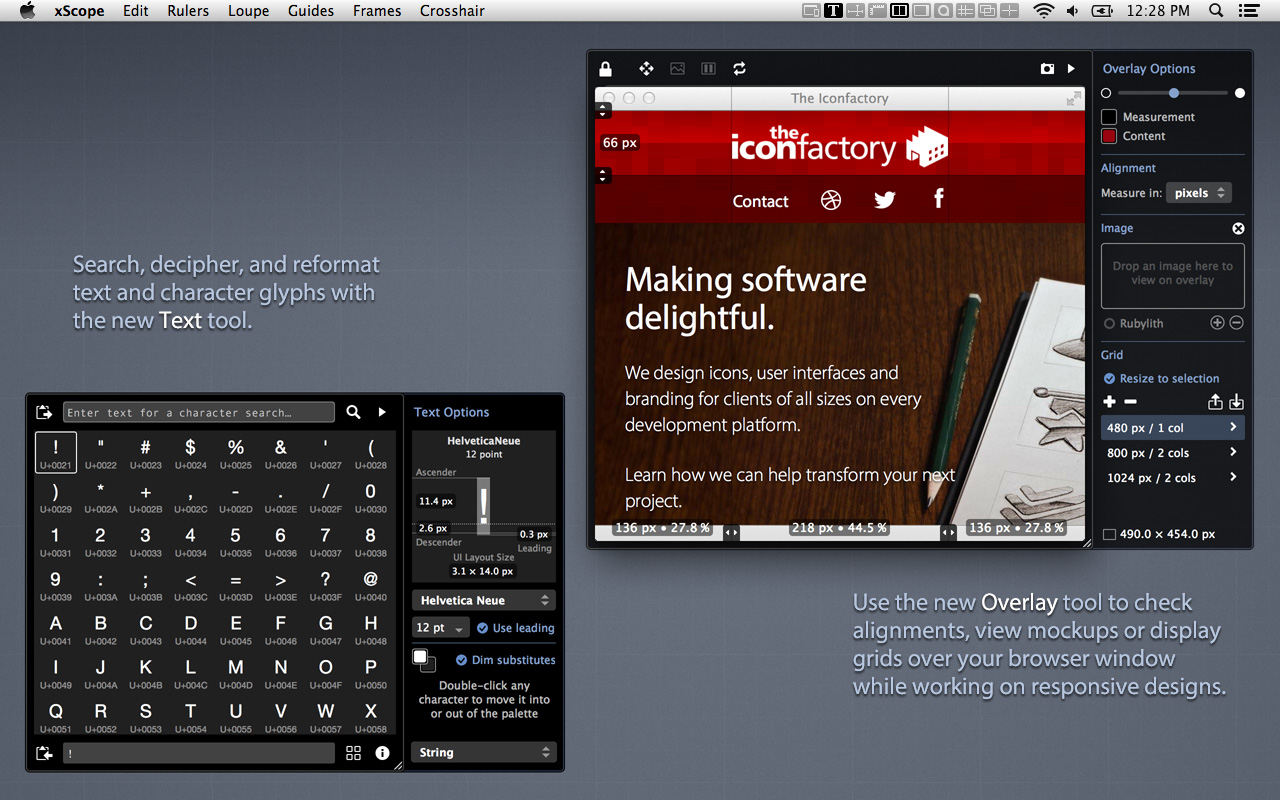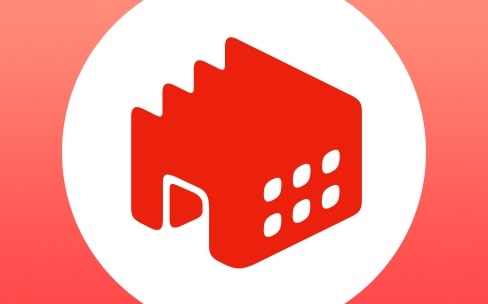

- Icon factory xscope add a rule for mac os x#
- Icon factory xscope add a rule update#
- Icon factory xscope add a rule software#
In November 2008, we released our second product in iTunes: Frenzic. A month later, the product was released at the launch of the App Store. In June, we were honored with an ADA for our work with the iPhone version of Twitterrific.
Icon factory xscope add a rule update#
We started 2008 off with a major update to our xScope application, including the revolutionary Dimensions tool. November saw a major update in CandyBar 3 in which we combined many great features from our Pixadex product into a new Leopard optimized application. In February 2007, we released our first game: Frenzic, another collaboration with ARTIS Software. Our first release of 2007 was Twitterrific, a wildly popular client for Twitter. We also retired our IconDropper and iControl products at that time. In August 2006, we completed another major redesign, this time of the Iconfactory website itself, using Ruby on Rails and other state-of-the-art technology. This version of our venerable application for creating icons was rebuilt from the ground up using Cocoa and the latest improvements of the Photoshop API. IconBuilder 8 was released in August 2005.
Icon factory xscope add a rule software#
November 2003 saw our next software release, xScope, which was developed in a partnership with ARTIS Software. These collections, already in use by hundreds of companies, allow developers to improve the look of their application at a fraction of the cost of a custom design. In June 2003 we began offering stock icon collections for sale at. Both CandyBar and Pixadex (released in July 2003) are the result of our partnership with Panic Inc.

Icon factory xscope add a rule for mac os x#
Our first products for Mac OS X were released in 2002: CandyBar in August and iPulse in November. In February of 2000, our iControl product was released in collaboration with Polymorph Software Development. Further collaboration resulted in the release of IconBuilder in December 1998. With guidance from this talented group, IconDropper was released to the public in May 1997. While developing a new shareware application, I consulted with the foreman and workers. My association with the factory began with admiration of the wonderful icons. The Iconfactory is a place for people who appreciate beautiful pixels on their computing desktop. I have been using the Internet since 1984. The Iconfactory – Chief Typist (1996 to present) University of Sydney, Power Institute of Fine Arts – Art History.Coastline Community College – Italian, Printmaking.University of California, Irvine – major in Computer Science, minor in Fine Arts.In past lives, Craig has built robots, processed satellite imagery, and created effects filters for Photoshop. He loves writing cool software for the Mac, iOS, and the web. His personal website at has also helped many aspiring iOS developers. He’s responsible for the secret control panels at, a website that gives away about 2 terabytes of pixels every month. Their work includes the design & production of icons for Microsoft, Apple, Adobe and other leading software companies. He is currently a principal at the Iconfactory, a company that has been changing the face of the computer desktop since 1996. I am skipping the ridiculous number of times you will have to enter your password.Craig Hockenberry has been designing award-winning software for over 40 years. Copy this newly-edited file back to the "Contents" folder you found in Step 2.If in doubt, uncheck "Hide extension" in the lower left of the Save window.) (Be careful not to let Finder change the extension to. Save the (duplicate) file to your desktop.As soon as you try to do anything to the file, you will get a message saying "You don’t have permission to write to the folder that the file 'Info' is in" and offering to let you edit a duplicate.Right-click > select "Show Package Contents" > select "Contents." You should now see the directory containing your app, which should include a file called ist.


In Finder, under Applications, find the relevant app.Make sure you are logged in as an Administrator.Some extra help for the less experienced.Īpple, as usual, makes this sort of control over your own computer difficult when not impossible. Stick these in before the lines, and voilà. Plist files use a key/value format, declaring the type of the key.


 0 kommentar(er)
0 kommentar(er)
